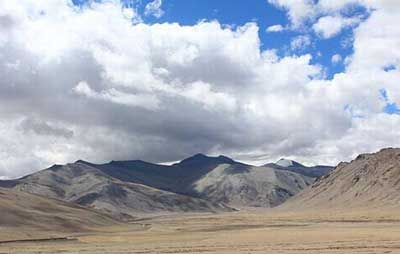Relevance: GS-2 : India and its neighborhood relations, Bilateral, regional and global groupings and agreements involving India and/or affecting India’s interests.
Key Phrases: India China standoff, Depsang, Hot Spring, Friction points, Delinking Depsang
Why in News ?
- In a recent television interview, the Indian Army Chief, General M.M. Naravane, argued that “out of the five or six friction points (in Ladakh), five have been solved”
- By asserting that only one of the friction points is remaining to be resolved - he was referring to Hot Springs or PP15, the only one discussed in the last round of talks with the Chinese - he implicitly ruled out Depsang as an area to be resolved.
Key Highlights
- India and China have held 14 rounds of military and diplomatic talks since a clash in June 2020 between Indian and Chinese troops in the Galwan river valley, which left at least 20 Indian troops dead.
- The 14th round of talks between the Indian and Chinese senior military commanders to discuss disengagement at the remaining friction points at the Line of Actual Control (LAC) in eastern Ladakh ended in a stalemate.
- The next round of talks will be held soon to work out the disengagement at Hot Springs after both sides get the necessary political directives.
Issue of Hot Springs
- Currently, there are about 35-50 soldiers on each side in Hot Springs, the disengagement for which was first agreed upon in July 2020, immediately after the Galwan clash.
- However, while the Chinese did withdraw a large number of troops from the area, they retained a small group there.
- Beijing is seeking to cement the current status quo, while New Delhi hopes for disengagement, and eventual de-escalation.
About Friction Points in Ladakh
- ‘Friction point’ is an Indian euphemism for points of Chinese ingress into hitherto India-controlled territory in Ladakh, where this control is exercised by the Army and the Indo-Tibetan Border Police (ITBP) through regular patrols to the claimed areas.

- These ‘friction points’ are Depsang, Galwan, Hot Springs, Gogra, North bank of Pangong Tso, Kailash Range and Demchok.
- This attempt to delink the strategically important area of Depsang from the ongoing Ladakh border crisis is worrying.
- It may suit the domestic political agenda of the government of proclaiming an early end to the crisis, but it has long-term strategic consequences for India.
Current Situation in the Region
- A few kilometers south-east from the important airstrip of Daulat Beg
Oldi (DBO), the Chinese army has blocked Indian patrols since early 2020
at a place called Y-junction or Bottleneck, denying it access to five
PPs:
- PP10, PP11, PP11A, PP12 and PP13.
- A joint patrol of the ITBP and Army would patrol these five PPs approximately once a month.
- Y-junction is around 18 km on the Indian side of the Line of Actual Control, even though the Chinese claim line lies another five kilometers further west, to the east of Burtse town.
- Satellite imagery from November 2021 confirms Chinese deployments at
the Y-junction:
- Two PLA Ground Force camps with six infantry fighting vehicles split between two positions while a small Indian Army forward camp is stationed 1.2 km west of the Y-junction.
Importance of of Depsang
- Depsang is an enclave of flat terrain located in an area the Army classifies as Sub-Sector North (SSN).
- SSN lies to the east of Siachen, located between the Saltoro ridge on the Pakistani border and the Saser ridge close to the Chinese border.
- It provides land access to Central Asia through the Karakoram Pass.
- The Army has always identified Depsang plains as where it finds itself most vulnerable in Ladakh, devising plans to tackle the major Chinese challenge.
- SSNs flat terrain of Depsang, Trig Heights and DBO - which provides direct access to Aksai Chin - is suited for mechanized warfare but is located at the end of only one very long and tenuous communication axis for India.
- China, in turn, has multiple roads that provide easy access to the area.
- This leaves SSN highly vulnerable to capture by the PLA, with a few thousands of square kilometers from the Karakoram Pass to Burtse, likely to be lost.
- Nowhere else in Ladakh is the PLA likely to gain so much territory in a single swoop.
- On paper, it is the only place where a physical military collusion can take place between Pakistan and China — and the challenge of a two-front war can become real in the worst-case scenario.
- If India loses this area, it will be nearly impossible to launch a military operation to wrest back Gilgit-Baltistan from Pakistan.
Dangers of delinking Depsang
- Legitimize Chinese Claim:
- The biggest danger of delinking Depsang from the current border crisis in Ladakh, however, is of corroborating the Chinese argument, which invalidates the rightful Indian claim over a large swathe of territory.
- In sparsely populated areas like Ladakh, with limited forward deployment of troops, the only assertion of territorial claims is by regular patrolling.
- By arguing that the blockade at Y-junction predates the current stand-off - a ‘legacy issue’ that goes back years - the Chinese side can affirm that Indian patrols never had access to this area and thus India has no valid claim on the territory.
- Already living with the disadvantage of being a lesser power vis-à-vis China, this argument further weakens India’s hand during negotiations in Ladakh.
Conclusion
- As was demonstrated by China in the aftermath of the 1962 War, there should be no holding back in painstakingly asserting one’s claims when it comes to safeguarding the territory. Denial of truth for domestic political gains, in this case, will certainly be to the detriment of India’s strategic interests.
Source: The Hindu
Mains Question:
Q. Briefly discuss the disputed boundary areas between India and China ?What is the significance of Depsang for India and China.? Discuss. 250 Words







